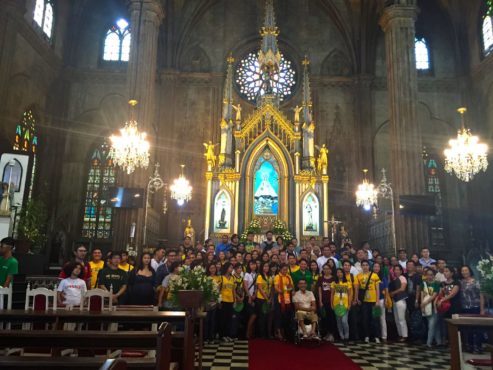
On May 7, Manila joined 200 cities in celebrating the 10th anniversary of Jane’s Walk and what would have been Jane Jacob’s 100th birthday. Jane’s Walks began in 2006 to commemorate the life of one of the most influential figures in urban planning. Jane Jacobs championed a community-based approach to designing cities, including the seminal concepts of pedestrian-friendly sidewalks, parks, and retail design in building vibrant local economies. She helped derail plans to convert core downtown neighbourhoods into highways in both Toronto and New York. May also marks National Heritage Month, providing opportunities to raise awareness of heritage buildings in need of preservation.
In partnership with Far Eastern University, Map the Philippines hosted a walking tour of historic Quiapo district attended by over a hundred participants. Labelled #mapPHquiapo, the tour included 125 year-old San Sebastian Basilica, led by Conservation Foundation Director, Tina Paterno who detailed the rich history of the country’s only all metal building and whose interior finishes are still original from 1891. The Basilica’s steel and cast iron were forged in Belgium and shipped to Manila in 9 steamships, and then curiously painted to look like stone. Its painters were the country’s leading art school which eventually evolved to become the University of the Philippines Fine Arts. Another original feature is its intricately painted German stained glass by Heinrich Oidtmann, whose work is part of major museum collections around the world.
From the church, Kapitbahayan sa Kalye Bautista’s Peter Rallos and Far Eastern University Guides Fatima Mae Luna and Francis Calderon led participants through historical Hidalgo street lined with 300 year-old homes and Bahay Nakpil-Bautista, home of composer Julio Nakpil and heroes of the 1896 revolution. The tour ended at Far Eastern University’s living art space, recognized by UNESCO for successful heritage preservation. Its five Art Deco buildings were designed by Pablo Antonio, Sr., National Artist for Architecture.
From the walking tour showcasing Quiapo’s past and present, the event transitioned to a mapping party for Quiapo’s future at the modern Far Eastern University Institute of Technology 17th floor hall overlooking the city of Manila. Participants learned the basics of neighborhood mapping on OpenStreetMap, how to report heritage protection needs, and how to share photos on free mapping app, Mapillary. Wikimedia Philippines taught participants how to create and edit Wikipedia pages. Local residents and the local fire hall inspector shared concerns regarding fire safety and the lack of adequate sprinkler and hydrants to protect heritage sites and affected communities, which initiated a separate project to map to identify fire risks in Quiapo.